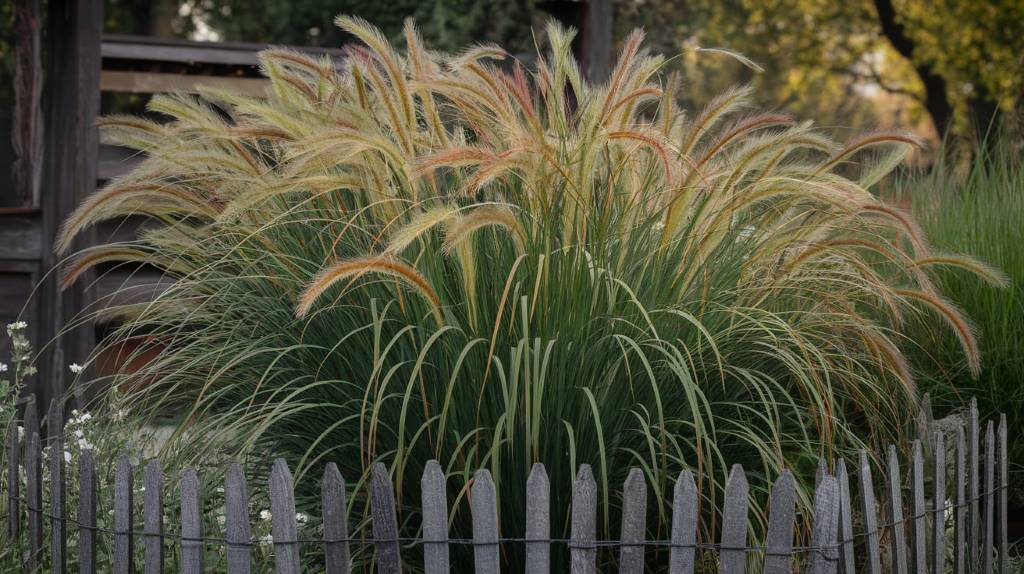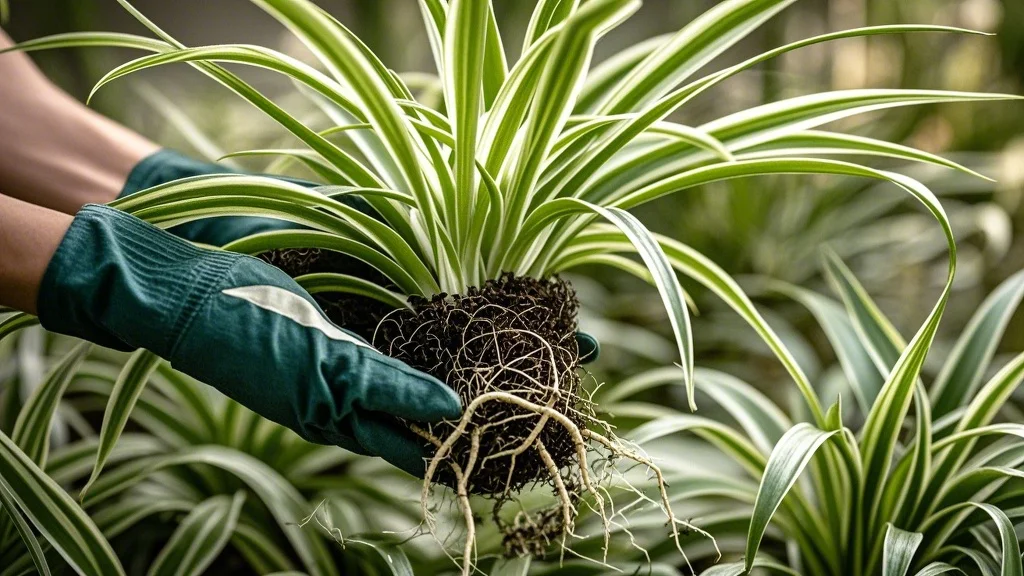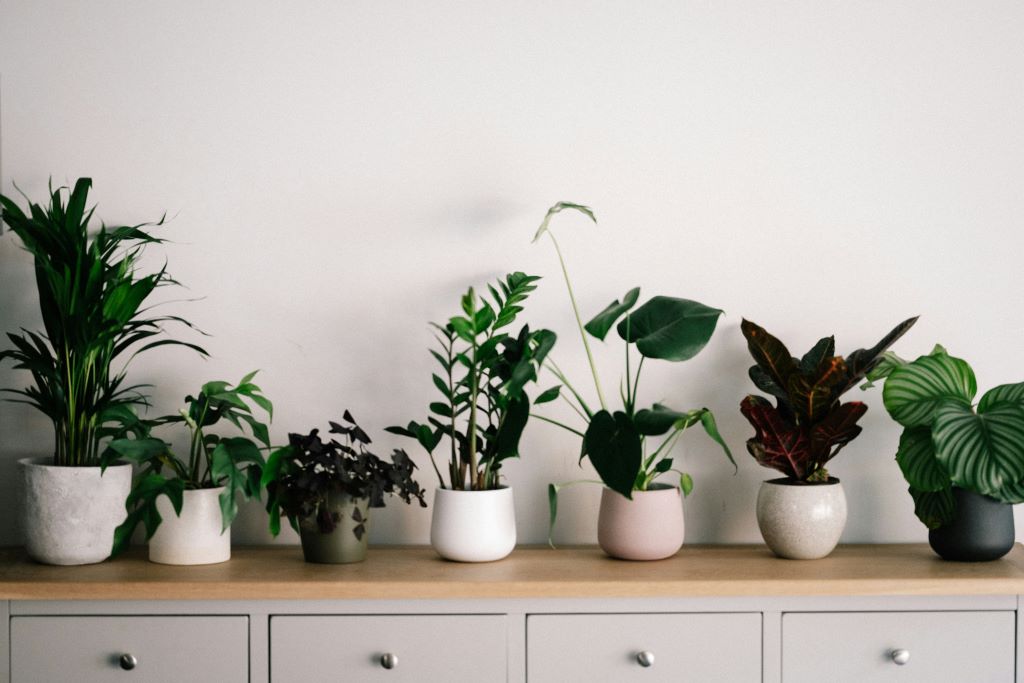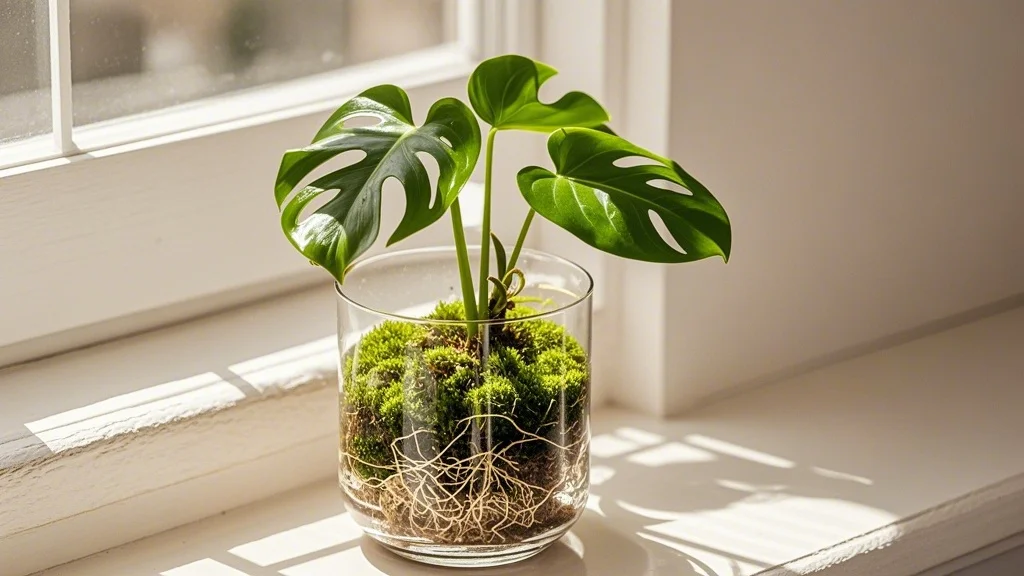For intermediate plant owners and crowded plant rescuers, division propagation is an essential technique to master. This method allows you to multiply your beloved plants by separating their root systems, creating multiple healthy specimens from a single parent plant. In this comprehensive guide, we’ll explore the art of division propagation, providing you with step-by-step instructions and valuable tips to ensure success.
Contents
What is Division Propagation?
Division propagation is a method of asexual plant reproduction where a mature plant is separated into two or more sections, each with its own roots and shoots. This technique is particularly effective for plants that grow in clumps or have multiple crowns, such as many perennials, grasses, and some houseplants.
Benefits of Division Propagation

- Rejuvenation: Dividing older plants can reinvigorate them and promote healthier growth.
- Space management: Ideal for controlling the size of rapidly spreading plants.
- Multiplication: Create multiple plants from a single specimen, perfect for sharing or expanding your collection.
- Cost-effective: A free way to increase your plant inventory without purchasing new plants.
- Genetic preservation: Divided plants are exact clones of the parent, maintaining desirable traits.
When to Divide Plants
Timing is crucial for successful division propagation. Generally, the best times to divide plants are:
- Spring: Just as new growth begins to emerge
- Fall: After the plant has finished its active growing season
Avoid dividing plants during their peak growing season or when they’re flowering, as this can stress the plant and reduce the chances of successful propagation.
Tools You’ll Need
Before you begin, gather the following tools:
- Clean, sharp pruning shears or a gardening knife
- Garden fork or spade
- Clean pots with drainage holes
- Fresh, well-draining potting mix
- Gloves
- Newspaper or tarp (for easy cleanup)
Step-by-Step Guide to Division Propagation
1. Prepare Your Workspace
Lay out newspaper or a tarp to catch soil and debris. Ensure you have all your tools and materials within reach.
2. Remove the Plant from Its Container
Gently remove the plant from its pot. If it’s root-bound, you may need to tap the sides of the container or run a knife around the edge to loosen it.
3. Examine the Root Ball
Carefully shake or wash off excess soil to expose the root system. Look for natural divisions or separate crowns within the root ball.
4. Divide the Plant
There are several methods to divide plants, depending on their root structure:
For Fibrous Roots:
- Gently pull the plant apart with your hands, teasing the roots to separate them.
- If necessary, use clean, sharp pruning shears to cut through any tangled roots.
For Rhizomes:
- Use a sharp knife to cut through the rhizome, ensuring each section has at least one growth point and a healthy root system.
For Woody or Dense Root Balls:
- Use two garden forks back-to-back to pry the root ball apart.
- For extremely dense root balls, you may need to use a sharp spade or saw to cut through the center.
5. Trim and Clean
- Remove any dead, damaged, or diseased roots from each division.
- Trim back some of the foliage to reduce stress on the newly divided plants.
6. Replant the Divisions
- Fill clean pots with fresh, well-draining potting mix.
- Plant each division at the same depth it was growing before.
- Gently firm the soil around the roots to eliminate air pockets.
7. Water and Care
- Water the newly potted divisions thoroughly.
- Place them in a sheltered area with indirect light for a few days to recover from the shock of division.
Plants Suitable for Division Propagation
Many plants respond well to division propagation. Here are some popular options:
- Perennials:
- Hostas
- Daylilies
- Astilbe
- Peonies
- Black-eyed Susans
- Grasses:
- Ornamental grasses
- Bamboo
- Houseplants:
- Spider plants
- Snake plants
- Peace lilies
- Pothos
- Philodendrons
- Ferns:
- Boston ferns
- Maidenhair ferns
- Bird’s nest ferns
- Succulents:
- Aloe vera
- Echeveria
- Sedum
Tips for Successful Division Propagation
- Timing is key: Choose the right season for dividing your plants to ensure the best chances of success.
- Clean tools: Always use clean, sterilized tools to prevent the spread of diseases between plants.
- Size matters: Ensure each division has enough roots and foliage to support itself. Smaller divisions may take longer to establish but can often produce more vigorous plants in the long run.
- Be gentle: Handle the roots carefully to minimize damage and stress to the plant.
- Proper planting: Plant divisions at the same depth they were growing before to avoid issues with crown rot or exposed roots.
- Aftercare: Provide extra care and attention to newly divided plants, including regular watering and protection from extreme temperatures or direct sunlight.
- Patience: Some plants may take time to recover from division. Be patient and consistent with your care routine.
- Label your divisions: If you’re dividing multiple plants, label each new division to keep track of varieties and care requirements.
- Consider plant-specific needs: Research the specific requirements of the plant you’re dividing, as some may have unique needs or preferences for division.
- Practice makes perfect: Don’t be discouraged if your first attempts aren’t entirely successful. Division propagation is a skill that improves with practice.
Troubleshooting Common Issues
1. Wilting After Division
- Cause: Shock from the division process or insufficient roots.
- Solution: Provide extra humidity, reduce light exposure, and ensure consistent moisture until the plant recovers.
2. Rotting Roots
- Cause: Overwatering or poor drainage.
- Solution: Ensure proper drainage in pots and adjust watering frequency. Remove any rotted portions and replant in fresh, well-draining soil.
3. Slow Growth or No New Growth
- Cause: Insufficient roots or nutrients.
- Solution: Be patient, as some plants take time to establish. Consider a light application of balanced fertilizer once new growth appears.
4. Pest Infestations
- Cause: Stress from division can make plants more susceptible to pests.
- Solution: Monitor closely for signs of pests and treat promptly with appropriate methods (e.g., neem oil, insecticidal soap).
5. Leaf Yellowing or Browning
- Cause: Transplant shock or improper care after division.
- Solution: Adjust light and water levels as needed. Remove affected leaves to encourage new growth.

Conclusion
Division propagation is a valuable skill for any plant enthusiast, offering a way to multiply your plant collection, manage overgrown specimens, and share the joy of gardening with others. By following this guide and practicing with different plants, you’ll soon become proficient in this rewarding technique.
Remember that each plant is unique, and what works for one may not work for another. Always research the specific needs of your plants and be willing to adapt your approach as needed. With patience, care, and a bit of practice, you’ll be successfully dividing and multiplying your plants in no time, creating a lush and thriving urban garden.
Happy dividing, and may your plants multiply and prosper!








